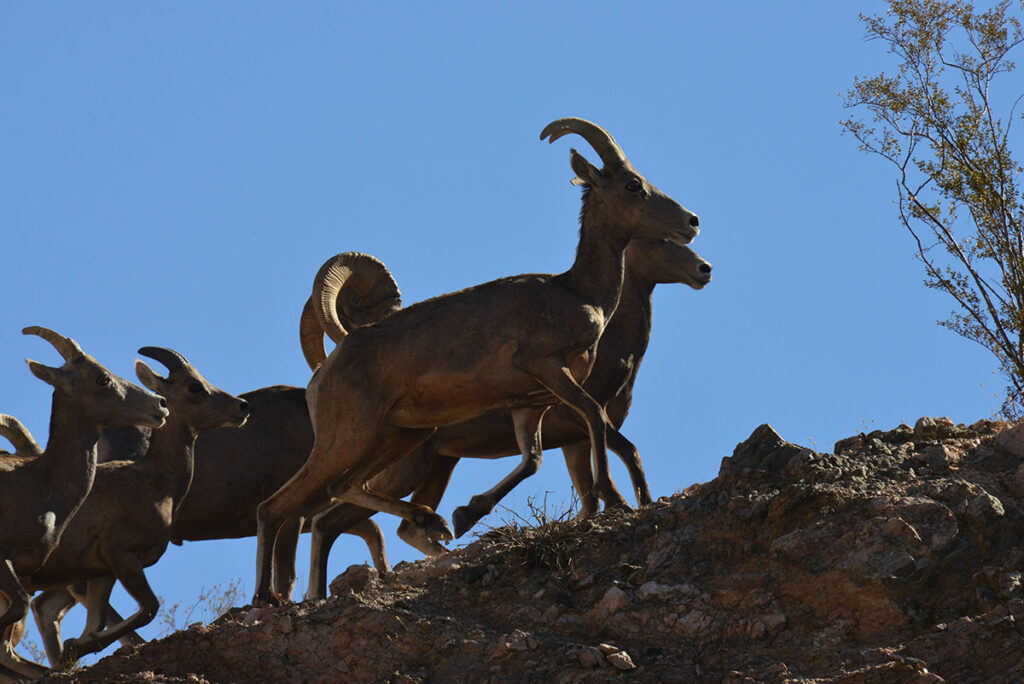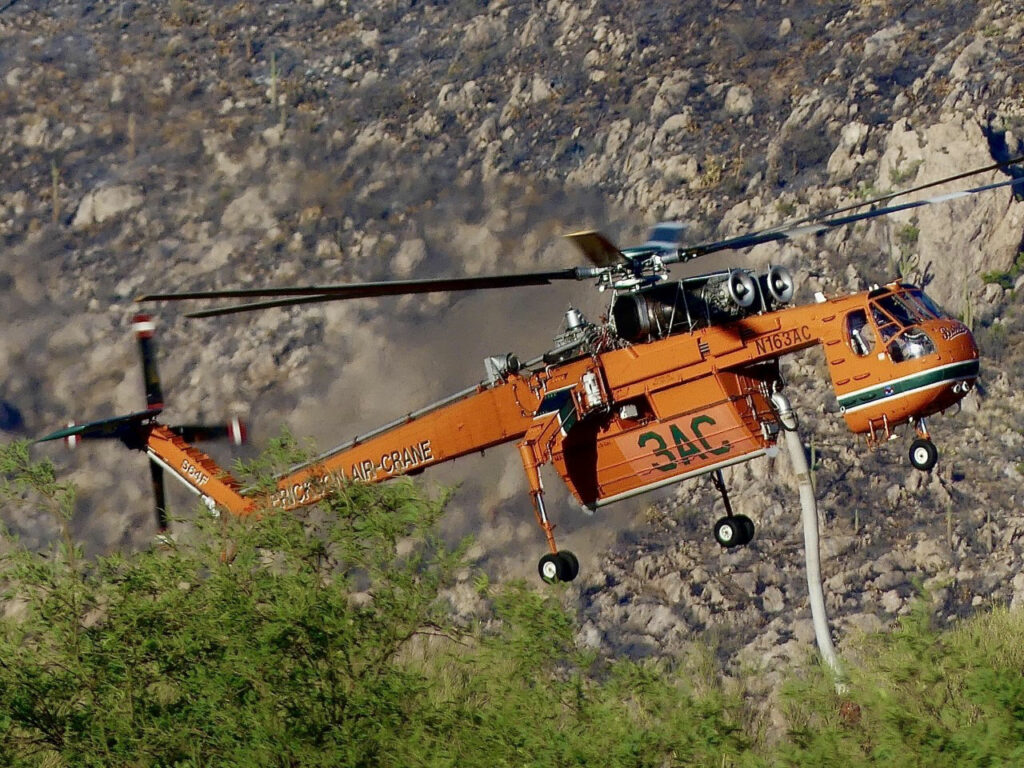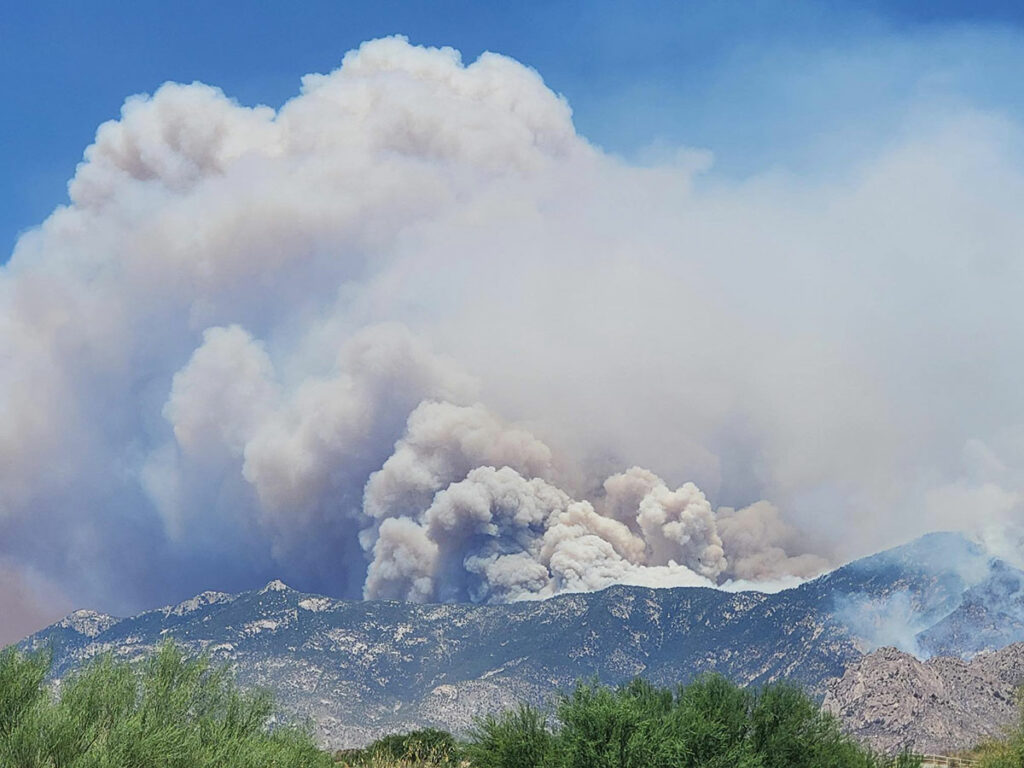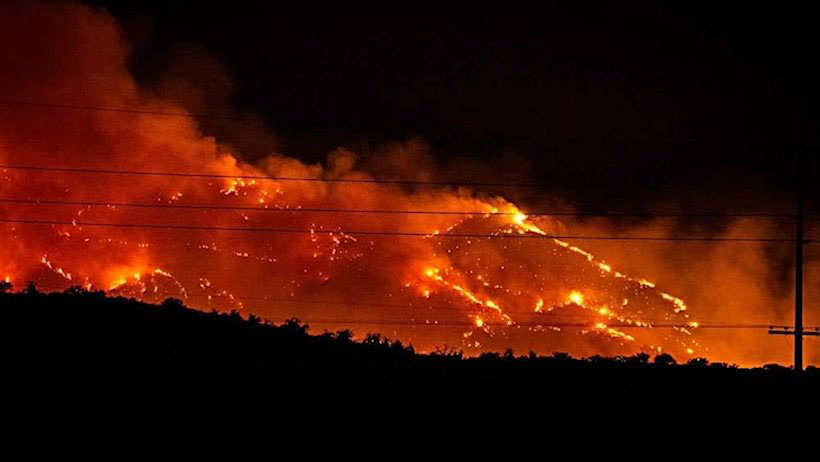
Wildfires affect wildlife, but perhaps not as much and not in the same ways many folks might imagine. Wildfires often are good for wildlife, which means they also can be good for hunting.
It may be counterintuitive to think that such devastating infernos could be anything but bad. They are natural phenomena and nature isn’t always kind or subtle.
SCI accompanied Arizona Game and Fish Commission Chairman Eric Sparks to the Bighorn Fire, where he and representatives of the Arizona Game and Fish Department were on-hand to see firsthand how firefighting efforts were going and whether any of the wildlife might be in danger. As it turned out, there was not a significant threat to wildlife.
The AZGFD routinely works with other agencies – county, state and federal – whenever wildfires break out. Those kinds of joint efforts are intended to protect both humans and wildlife.
I have covered wildfires off and on for the past half-century, more frequently in the past, but continue to do so to this day. Each one is different in some ways, yet all are quite similar in other ways.
Usually, death and destruction accompany wildfires, as does property damage and immense investments in time and energy to control them. Yet, they persist.
And why not? Wildfires are natural events that take place in nature. Granted, some are human caused, but the fact is that as a phenomenon, they are a fact of nature.
Most of the firefighting efforts associated with wildfires are focused on protecting human property and human lives. As massive as these efforts can be, they rarely have a significant and immediate effect on the wildlife in the area.
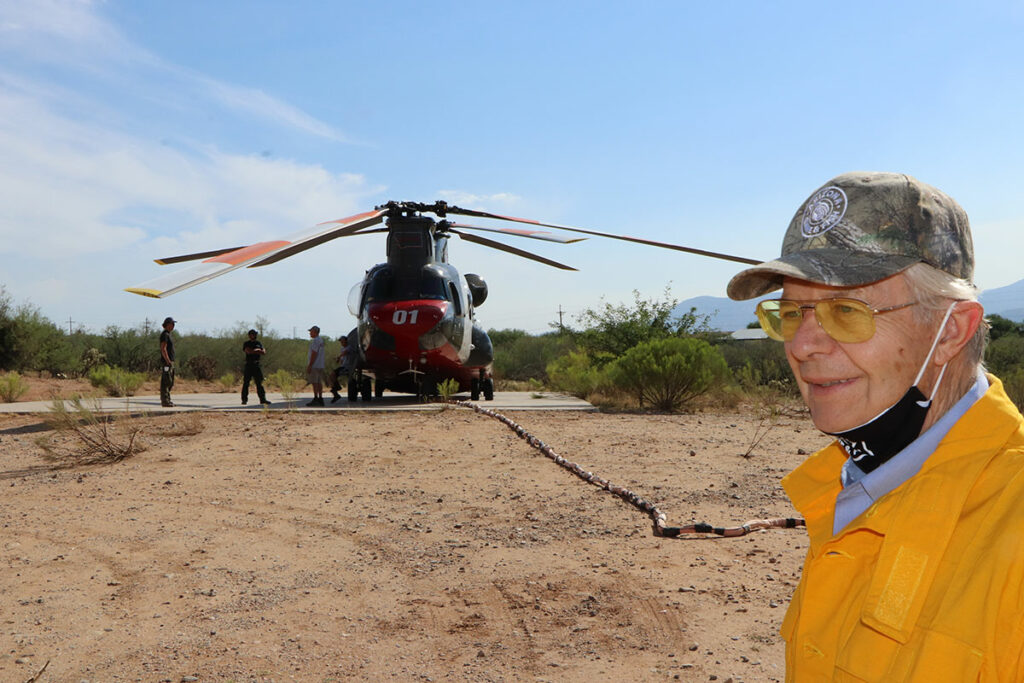
This past summer, a wildfire called the Bighorn Fire that stretched northerly and easterly from the edge of metropolitan Tucson, Arizona served as an example of how such fires work and what impacts they have on wildlife.
Discussion of that fire, which started on Bighorn Mountain along Pusch Peak Ridge, is easier because it was caused by a lightning strike on June 5 and was fully contained July 23. During that time, it consumed 119,978 acres, most of it steep, mountainous terrain. Damage was estimated at $37 million. There was no loss of human life (seven firefighters – there were nearly 1,000 firefighters at the height of the fire — suffered non-fatal injuries) and there was no significant loss of property or structures.
In other words, virtually everything about it was natural. And the prospects for hunting in the area? Better than normal this year and for the next two or three years, at least.
Officials reported that 64 percent of the fire area was low intensity or unburned and that 32 percent was a moderate burn. Four percent was considered high burn severity.
“The fire overall is good for wildlife, based on what we’ve seen in the past,” noted Rana Tucker, Terrestrial Wildlife Specialist – Game Management for the AZGFD. “Wildlife are adapted to periodic fires.
“With rain, we’ll see regeneration of nutritious growth,” she explained, noting that animals still will have escape cover. It gives them places to get to nutritious plant growth while still having cover.
For example, after the most recent major fire in that area in 2002, there was an increase in fawn ratios and in hunter success.
This year, most of the animals escaped and the burn scar will make it easier for hunters to spot deer when that season opens this fall.
The general area of the fire is where state game officials relocated a number of desert bighorn sheep in recent years. There has been no evidence that the bighorns were harmed by the fire at all.
Many of the bighorns remained safely in the unburned areas of the overall fire, while others simply moved out until the fire was extinguished fully by a summer monsoon.
In addition to bighorn sheep, the area supports populations of whitetail deer, black bears, mountain lions, wild turkeys and javelina.
During the fire, the AZGFD removed 900 Gila chub fish, as well as some leopard frogs, from waters in the fire area, according to AZGFD Public Information Officer Mark Hart. Some of the Gila chubs were relocated to the ponds at the SCI facilities in Tucson until they can be returned when the aftereffects of the fire are no longer a factor.
Relative to bears in the Bighorn Fire area, Hart noted that after the 2011 Monument fire in the Huachuca Mountains of Southern Arizona, bears moved into residential areas in 2012 because there was nothing for them in the total burn area there. It may not be that way following the Bighorn Fire, but authorities will monitor the situation as the months go by.
AZGFD will continue to survey and monitor the situation and make adjustments needed, if any, explained Raul Vega, Regional Supervisor for Region V of the AZGFD. Future game surveys will indicate how much effect, if any, the fire has had.
Not all wildfires are the same. Some can have greater negative effects on wildlife. However, very many, like the Bighorn Fire in Southern Arizona, have an overall positive effect on wildlife populations, even if the process of doing so turns wildlands into living hells while the fires rage.
And, there generally is better hunting in burn areas following major wildfires.–Steve Comus

